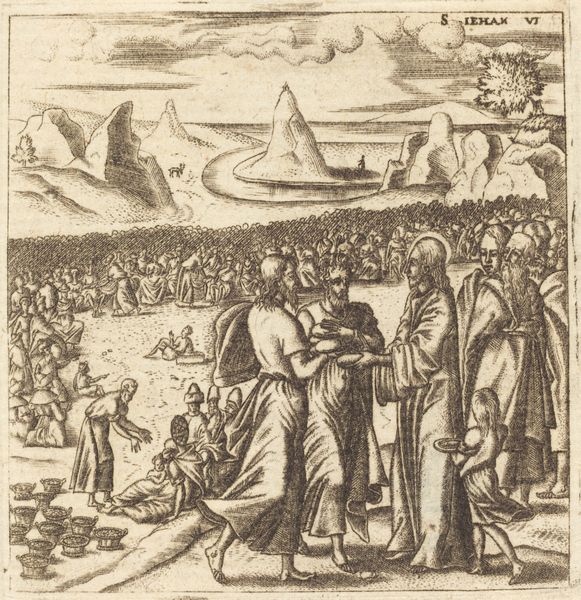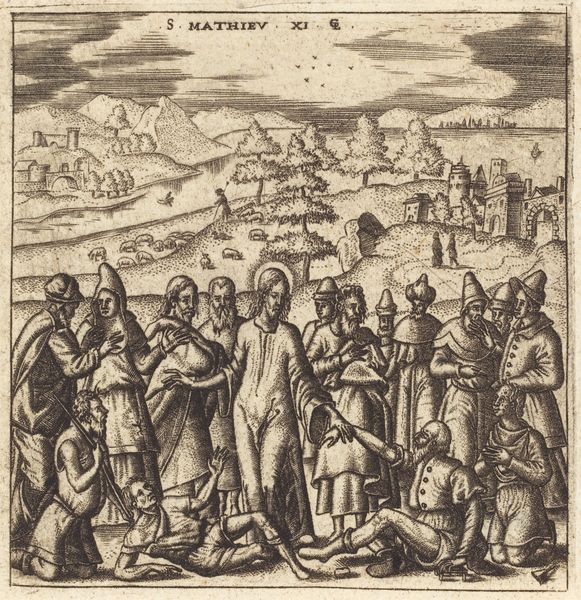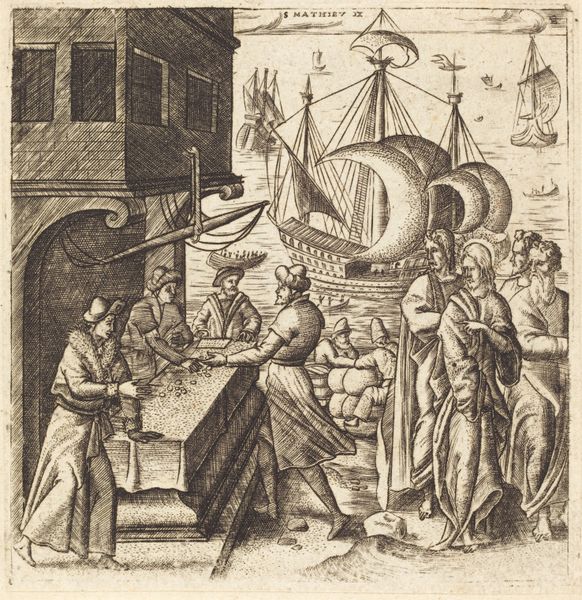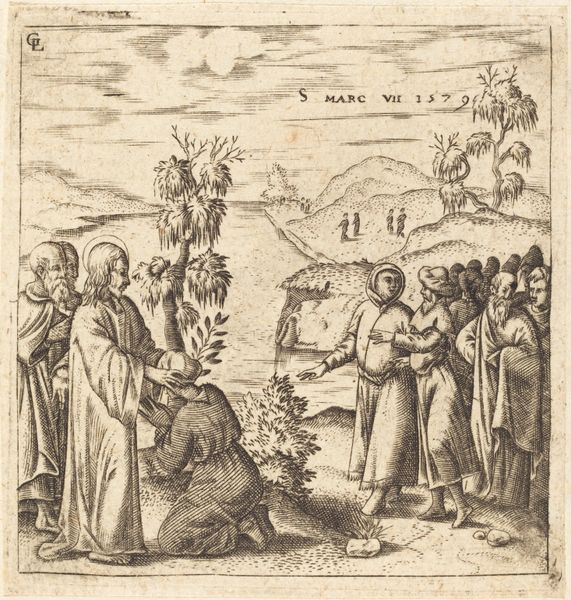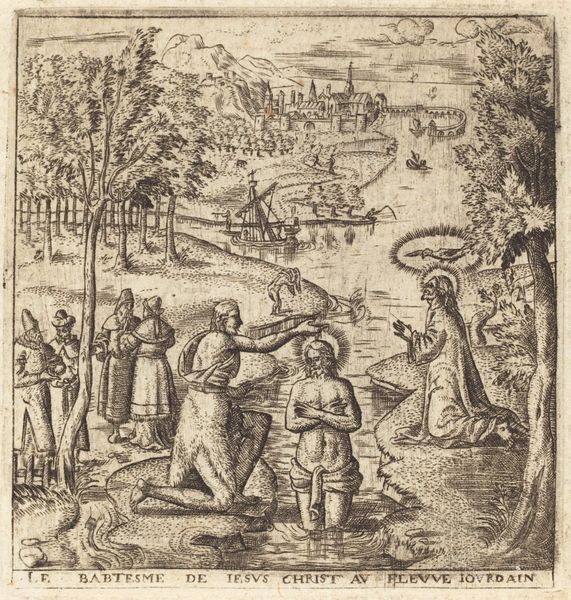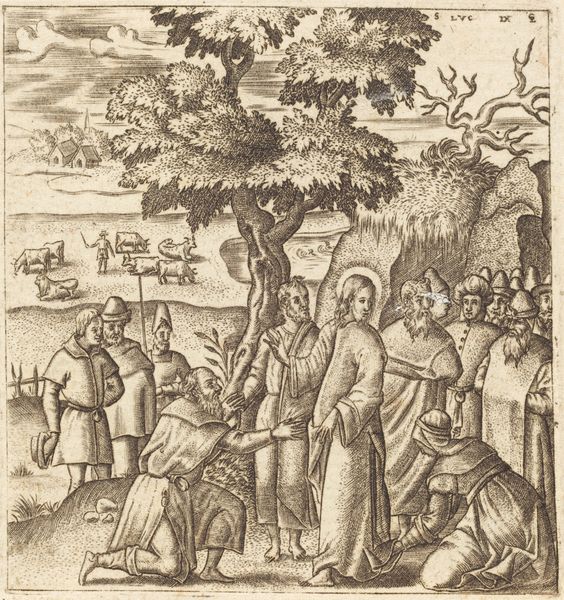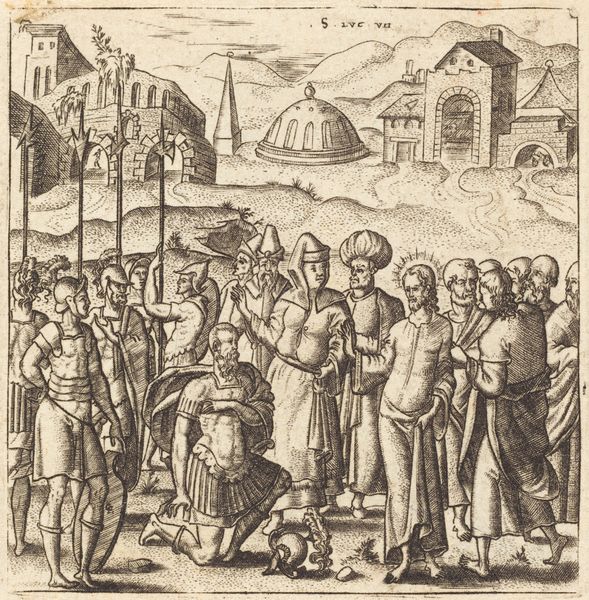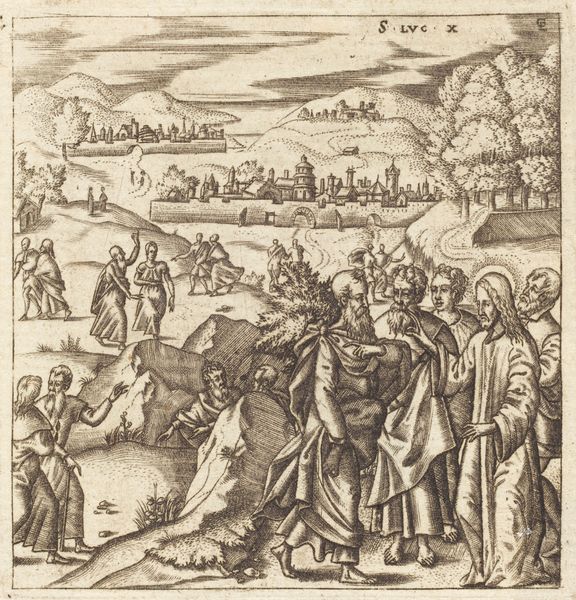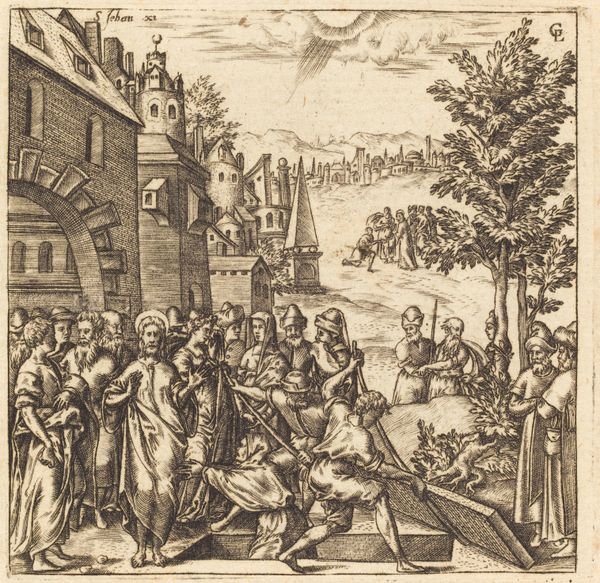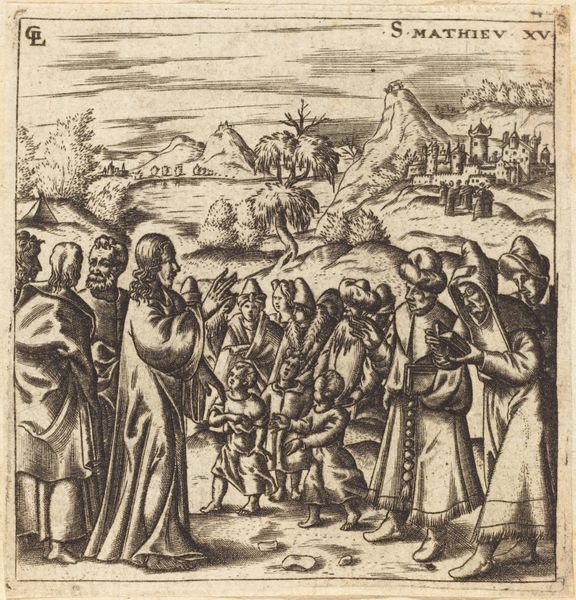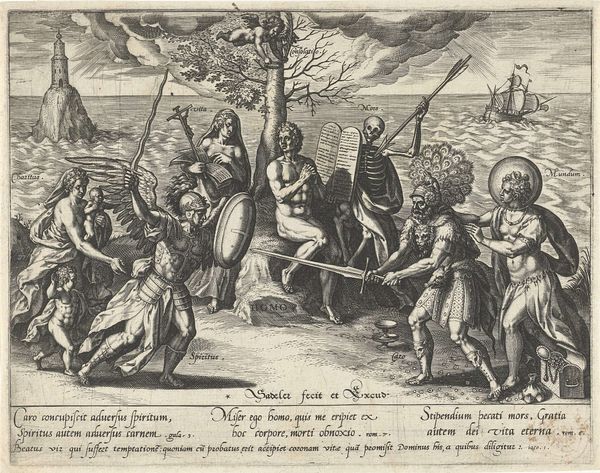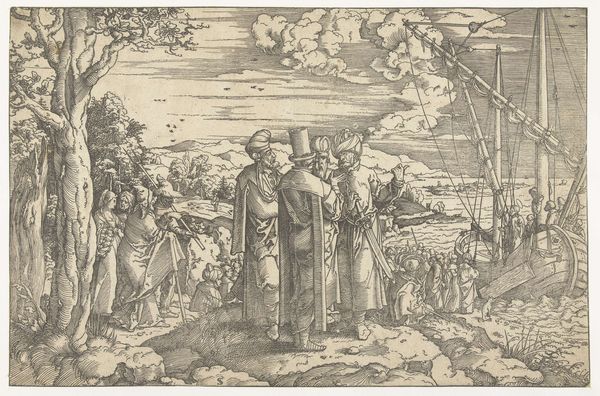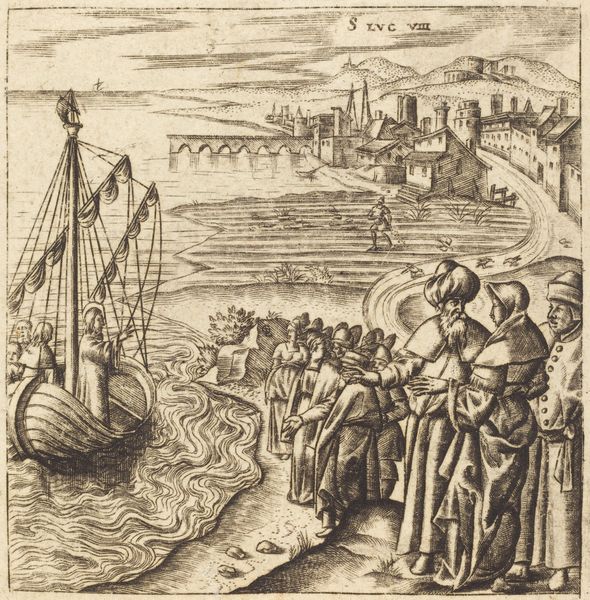
print, engraving
#
narrative-art
# print
#
history-painting
#
italian-renaissance
#
engraving
Copyright: National Gallery of Art: CC0 1.0
Editor: Here we have Léonard Gaultier's engraving, "Christ the Teacher," dating back to around 1576-1580. It's incredibly detailed, especially given it's a print. What strikes me is the dreamlike quality, with figures seemingly emerging from this landscape by a ship. What do you see in this piece? Curator: A dream indeed! More like a staged reality, where divine encounter meets everyday life with figures caught somewhere between the shore and an eternal harbor. Gaultier, blessed soul, makes you want to pick up one of Christ's robes he’s practically handing out there like celestial party favors! It's so Renaissance, trying to capture sacred moments as vivid as a morning thought. Does it speak to you of its time at all? Editor: I get that, especially with all the detail given to clothing and background. A definite flair of Italian Renaissance is clear with the storytelling and intricate scenes. What does that boat symbolize next to the figures in conversation? Curator: Ah, the boat. A symbol as old as stories themselves: safe passage through the world, right? But also departure. Maybe an invitation, or simply a constant reminder that life goes somewhere…perhaps onward and outward toward hope. Notice that despite it all, Gaultier focuses on that central exchange, the sharing. He must’ve wanted people to talk to each other, even today, five centuries later. How marvelous! Editor: It makes me see how it might inspire that idea – the connection between everyday interactions and greater meanings. What a legacy! Curator: Precisely! A print can do that: It democratizes and magnifies, even hundreds of years after the last inking. Thanks, now I might frame conversations a bit differently as these figures look so ready to exchange the universal wisdom to make the most of our time, don’t you agree?
Comments
No comments
Be the first to comment and join the conversation on the ultimate creative platform.
